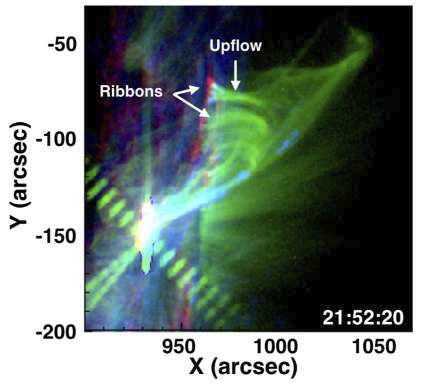A Hot Cusp-Shaped Confined Solar Flare
From RHESSI Wiki
| Nugget | |
|---|---|
| Number: | 370 |
| 1st Author: | Aaron Hernandez-Perez |
| 2nd Author: | |
| Published: | 24 February 2020 |
| Next Nugget: | The flaring photosphere |
| Previous Nugget: | The Temporal and Spatial Extension of Gamma-ray Emission from the Sun |
| List all | |
Introduction
A growing cusp-shaped flare arcade is a typical feature in the standard model of eruptive flares, and is regarded as a signature of magnetic reconnection taking place at progressively larger coronal heights. This feature resulted from 2D approximations to the process, while an earlier Nugget described a generalization to 3D. As reconnection occurs at successively larger heights in the solar corona, the outer flare loops have systematically higher temperatures than the previously reconnected ones, located underneath. We report (Ref. 1 rare observations of a confined flare that exhibited an apparent cusp with a temperature distribution distinctly different from those reported in literature, as it also exhibited an increased temperature with increasing height even in the absence of an eruption.
An Atypical Flare Loop
The flare SOL2014-01-13T21:51 appeared in the low corona at the location of nonthermal precursor activity. Magnetic reconnection induced particle acceleration, subsequent plasma heating and chromospheric evaporation, revealed cusp-shaped flare loops extending up to ~ 66 Mm into the corona (Fig. 1).
References
[1] "A Hot Cusp-shaped Confined Solar Flare"
| RHESSI Nugget Date | 24 February 2020 + |
| RHESSI Nugget First Author | Aaron Hernandez-Perez + |
| RHESSI Nugget Index | 370 + |
